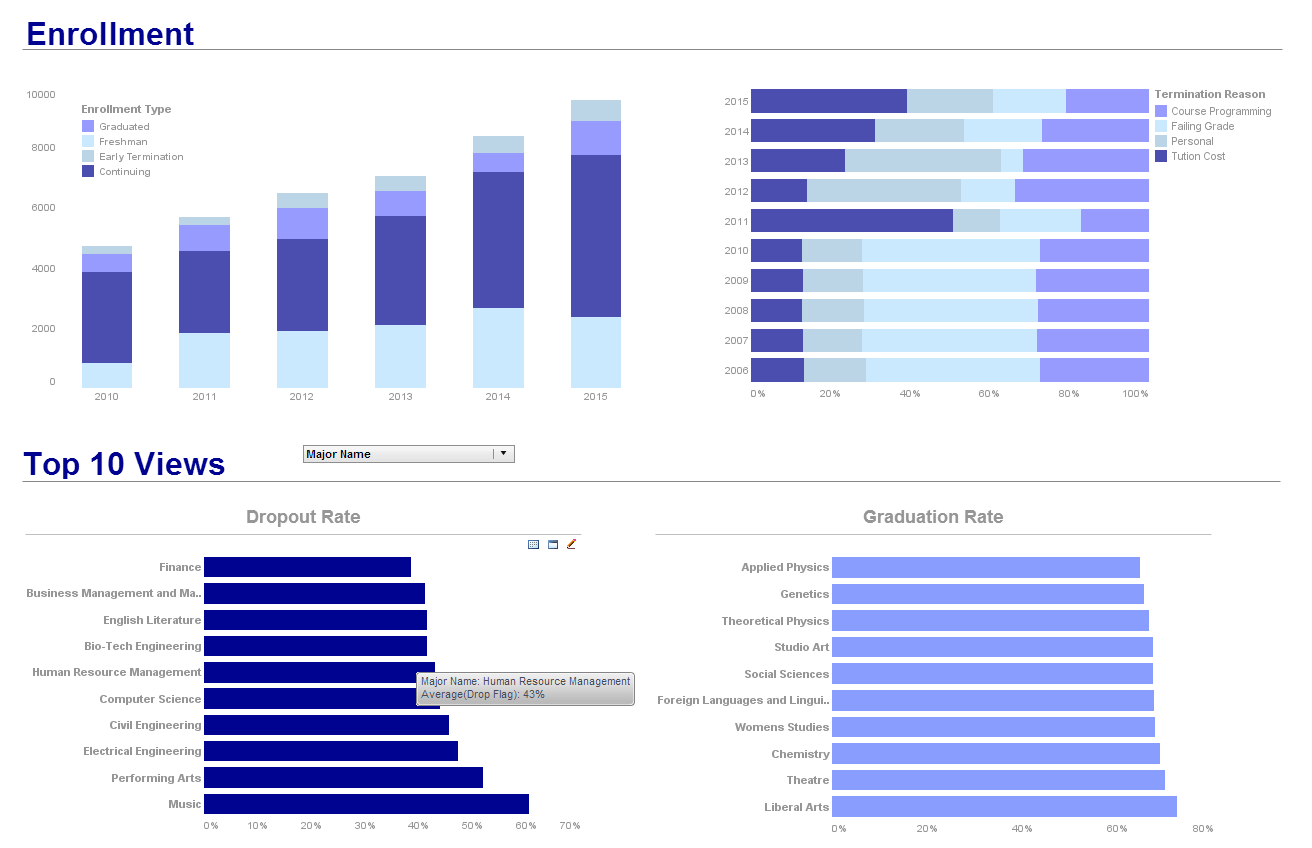Adjustable Preferences in Data Visualization Tools
This is the continuation of the transcript of DM Radio’s program titled “What You See Is What You ‘Get’ – How Data Visualization Conveys Insight,”.
Eric Kavanagh: Yeah, that's a good point. Another good one is the point about knowing who you are working with and what works for them. Obviously you can only spend so much time customizing stuff. You certainly want to focus on senior executives, for example. It does pay to notice certain personality types who just respond well to certain types of data visualization or of dashboards.
Wayne, maybe you are aware of this? Some people want to hold a lot of control. Some people just want a handful of key controls. It seems to me these are critical characteristics to take in mind when you’re designing some kind of a solution for someone. What do you think about that way?
Wayne Eckerson: Well, I don’t know if it's psychological driven as much as habit driven. I think people that are used to kind of consuming all the details at once find that visualization is more of an obstacle than an aid.
Although, you can't create very dense visualizations that pack more information into the same real estate than even a dense excel based table.
 |
View a 2-minute demonstration of InetSoft's easy, agile, and robust BI software. |
Watching Numbers Fly Across The Screen
But if you are an executive who has grown up squinting at spreadsheets and budgets or if you are an operations manager or specialist who has grown up watching numbers fly across the screen; you probably are used to observing and analyzing information that way.
You might find visualizations that require a lot of clicks and page changes to be a new sense. So I think a lot of it just has to do with the habits you’ve developed for how you observe and consume information.
Eric Kavanagh: Yeah. That’s true.
Wayne Eckerson: Just not to say there may not be some psychological elements in there too. But I may not be as aware of them.
Jim Ericson: Yeah, but I think also if you look at the data visualization traditionally, we’re used to looking at it as a kind of semantic. This is supposed to be an alphabet for people to communicate not made up of letters.
Now it seems we focus more on transformations, such as, dragging more data in and bringing in more context
than we used to before. Eric, when you introduced me to Howard Spellman ten years ago, we were talking
about some of these representations that Robin had mentioned.
But ideally I am a person that doesn't do Sudoku. You know, I don't relate to that spatially. So I
think the core here is finding the right dialect to communicate in. I can see how this can be a horrible train
wreck if someone simply isn’t adept to digest it the same way I am with Sudoku or whatever that
is.
Dr. Robin Bloor: There’s another interesting aspect, even though it's kind of like throwing a wrench into the work.
You can simplify statistics, like you know 90% of the time something happens but 10% of the time something else happens. So you want to go forward because it’s a 90% probability. That sounds okay unless there’s an operational new in the 10% as you die.
So there is context that is really very strong in terms of needed accuracy once you stop messing around with the shape and size of things.
Jim Ericson: I mean you just came to people with an idea for a screenplay there, Robin.
 |
Read the top 10 reasons for selecting InetSoft as your BI partner. |
What Are Some Examples of Where Data KPIs Are Displayed on TVs of Large Monitors in Public or Workplaces?
Displaying Key Performance Indicators (KPIs) on large monitors or TVs in public or workplace settings is a common practice to keep teams informed and motivated. Here are some examples of where data KPIs are often displayed:
-
Office Dashboards:
- Location: Common areas, such as lobbies or break rooms.
- Content: Real-time updates on project progress, sales figures, and team achievements.
- Manufacturing Floors:
- Location: Near production lines or in break areas.
- Content: Production efficiency, machine uptime, defect rates, and safety metrics.
- Call Centers:
- Location: Throughout the floor or in team huddle areas.
- Content: Call volume, response times, customer satisfaction scores, and individual agent performance.
- Retail Stores:
- Location: Behind the checkout counters or in staff areas.
- Content: Sales performance, inventory levels, and customer feedback.
- Healthcare Facilities:
- Location: Nurse stations, waiting areas, or break rooms.
- Content: Patient wait times, appointment scheduling efficiency, and staff-patient ratios.
- Educational Institutions:
- Location: Common areas, administrative offices, or faculty lounges.
- Content: Student attendance, academic performance metrics, and campus event updates.
- Financial Institutions:
- Location: Trading floors, bank branches, or employee lounges.
- Content: Market indices, investment portfolio performance, and customer satisfaction scores.
- Transportation and Logistics Hubs:
- Location: Dispatch areas, loading docks, or employee break rooms.
- Content: On-time delivery rates, vehicle tracking, and supply chain performance.
- Technology Companies:
- Location: Development team areas, common spaces, or project management offices.
- Content: Sprint progress, bug tracking, and software release timelines.
- Government Offices:
- Location: Public service areas or employee break rooms.
- Content: Service delivery metrics, citizen feedback, and compliance data.
- Hospitality Industry:
- Location: Hotel lobbies, back offices, or employee break areas.
- Content: Room occupancy rates, guest satisfaction scores, and event bookings.
- Sports and Entertainment Venues:
- Location: Locker rooms, player areas, or administrative offices.
- Content: Ticket sales, fan engagement metrics, and team performance statistics.
| Previous: Psychology of Data Visualization |
Next: Tailoring Info-Graphics
|
